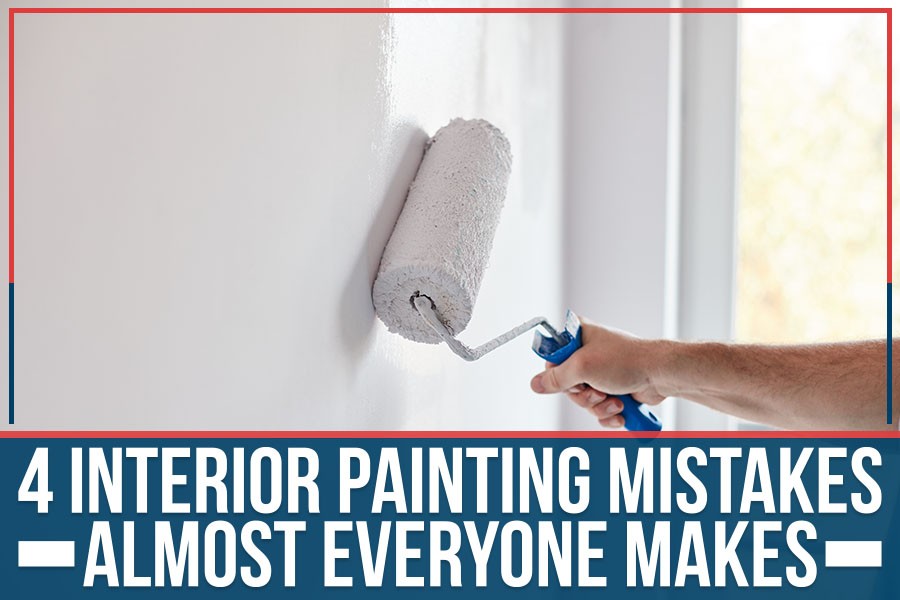4 Interior Painting Mistakes Almost Everyone Makes
Harmonious Designs by Interior Painters: Creating Balance and Beauty in Your Space

Table of Contents
Interior painting is an essential part of creating a harmonious and beautiful home. It allows for the enhancement of existing features, as well as adding new elements to create balance and beauty in any space. This article will provide an overview of the principles of design that can be used when working with interior painters to ensure a harmonious outcome. It will cover how colors, textures, and light can be used to evaluate the unique features of a room and create a functional yet aesthetically pleasing space. Finally, it will discuss the importance of seeking out experienced professionals to help bring your vision to life.
The principles of design are fundamental to creating a harmonious and aesthetically pleasing space; understanding their relationship is essential for successful interior painting. Design principles include balance, contrast, emphasis, rhythm, harmony and unity. Balance refers to the visual weight of objects in a space - it can be symmetrical or asymmetrical depending on the desired effect. Contrast defines differences between elements while emphasis focuses attention on specific parts of the design. Rhythm creates movement within the design by repeating visual elements such as colors or shapes. Harmony occurs when all of these elements come together in an aesthetically pleasing way that is coherent with each other. Finally, unity ties everything together and ensures that all components work together to create one unified look. Knowing how to use each principle can help you achieve an overall harmonious aesthetic for your interior painting project.
When designing a space, color, texture, and light are key components to consider. Careful selection of colors can create depth and dimension while adding texture to the walls can provide visual interest. Finally, utilizing both natural and artificial light can help accentuate the design elements in the room.
Selecting the right colors for an interior paint job is essential to creating balance and beauty in a space. The combination of hues chosen can make a room appear larger or smaller, warmer or cooler, and more inviting or more formal. For this reason, it is important to consider how different shades will work together when deciding on a palette for an interior painting project. One way to do this is to begin with one color as the main focal point, then build from there by selecting complementary tones that will create harmony throughout the space. Neutral colors such as beige, taupe, grey, white and black are popular choices because they blend easily with other hues and provide a sense of cohesion. It is also important to pay attention to the existing furnishings and decor in order to choose colors that will enhance rather than clash with them. By taking time to select appropriate colors before beginning any interior painting project, homeowners can ensure their space looks refined yet inviting when completed.
Adding texture to the walls is a great way to add dimension and interest to an interior design. Textures create visual interest, draw attention, and enhance the atmosphere of any space. Interior painters may use various textured painting techniques, such as stippling, rag rolling or combing. All of these techniques involve creating patterns and designs with paint applied in different ways. For instance, stippling involves applying dots of paint randomly on the wall using a brush. Rag rolling creates a pattern by pressing a dampened cloth onto wet paint while combing involves dragging a tool across wet paint in order to produce lines that look like waves or furrows.
In addition to being visually interesting and pleasing, textures can also be used as functional elements within an interior design scheme. Textures can be used to conceal imperfections on surfaces such as wallpaper seams or cracked walls, making them appear more attractive and inviting. Different textures can also be utilized for acoustical purposes; soft textured walls are known for their ability to absorb sound which makes them ideal for areas with high noise levels such as dining rooms or living rooms where people gather frequently. Furthermore, they can help improve air quality when properly applied since they trap dust particles preventing them from entering into the air we breathe – something beneficial for people who suffer from allergies or asthma-related problems.
Utilizing both natural and artificial light can help to create an aesthetically pleasing atmosphere in any environment. Natural light helps to bring the outdoors inside, allowing viewers to appreciate the beauty of nature while indoors. Artificial lighting also helps to brighten up dark spaces or provide targeted illumination for specific areas within a space. By combining these two types of light sources, interior painters can highlight certain features of a room while maintaining harmony between all elements present. For example, well-placed spotlights on artwork or furniture can add depth and texture without detracting from other design elements in the room. Additionally, layering different types of lighting fixtures creates a unique effect that adds visual interest and warmth to any space. Furthermore, the use of dimmers allows designers to adjust the levels of brightness in order to achieve desired ambiance levels throughout the day. In this way, interior painters are able to use light as an essential tool for creating balanced and harmonious designs in any given space.
Examining the room's unique characteristics is essential for creating a harmonious design. Interior painters should take into consideration the size of the room, the existing furniture and decor, and other features such as windows, doors, fireplaces, etc. By doing so, an interior painter can create a cohesive design that complements each feature in order to truly bring out the beauty of the space.
In addition to looking at the physical features of a room, interior painters should also consider how they want to use light – natural or artificial – to enhance their designs. Natural light can be used to draw attention to certain elements while artificial lighting can be used to highlight certain areas or give depth to particular objects within a space. A combination of both natural and artificial light sources can help create balance within a space and help bring out its best features.
Incorporating functional and aesthetically pleasing elements into a space can help create an inviting environment. A successful design must take into account the size, shape, orientation, and location of the room as well as its purpose, both practical and aesthetic. This means that interior painters should consider how these elements interact to create harmony in the space. For example, if a dining room is located next to a living area, there needs to be a clear delineation between areas with color and texture choices that complement each other but don't intrude on one another's character.
Interior painters must also pay attention to the amount of natural light available in order to make intelligent decisions when it comes to colors so that they do not overwhelm or interfere with the overall mood of the room. Additionally, they should take into account existing architectural details such as moldings or fireplaces which can be highlighted or toned down depending on their effect on the overall design scheme. Finally, furniture placement is essential for creating flow within a space while also ensuring efficient use of available floor space for maximum functionality.
Engaging an experienced interior painter can be critical for ensuring a successful outcome in creating a functional and beautiful space. A skilled painter will have the technical know-how to create harmonious designs that can bring balance and beauty into any space. An experienced painter is able to achieve this by combining design elements such as color, texture, shape, and light in order to create an aesthetically pleasing environment. Additionally, they are familiar with the latest trends in interior painting techniques that can further enhance a room's appearance. Furthermore, because of their expertise, many painters are able to provide guidance on furniture selection and placement that will help create an attractive yet functional living area. Ultimately, entrusting your project to an experienced interior painter can save time and money while helping you achieve the desired look for your home or business space.
Interior painting can be a great way to bring balance and beauty into any space. By understanding principles of design, utilizing color, texture, and light, and evaluating the unique features of the room, it is possible to create an aesthetically pleasing atmosphere that is both functional and beautiful. With the help of an experienced interior painter, these elements can be expertly combined to achieve a harmonious design that meets the needs of all involved. Ultimately, it is possible to turn any space into a place of peace and comfort through thoughtful interior painting.
Author

Mason Marquis, raised in Newport Beach, California, and Austin, Texas, amalgamated his experiences from both vibrant cities in his journey. His academic pursuit in Economics and Psychology at the University of North Texas (UNT) led to the founding of Spray Tex Painting. This venture was not just a business for Mason but a practical application of his academic learnings, particularly the integration of economic concepts and psychological understanding. Spray Tex Painting, under Mason's direction, transcends being merely a painting service; it's a platform where client visions are realized through dedication and creativity.
Related Articles

4 Interior Painting Mistakes Almost Everyone Makes

4 Tips For Upgrading The Paint At Your Food Joint

5 Unique Texture Painting Ideas to Add Depth to Your Walls

A Comprehensive Approach: Unveiling the Whole-house Paint Services